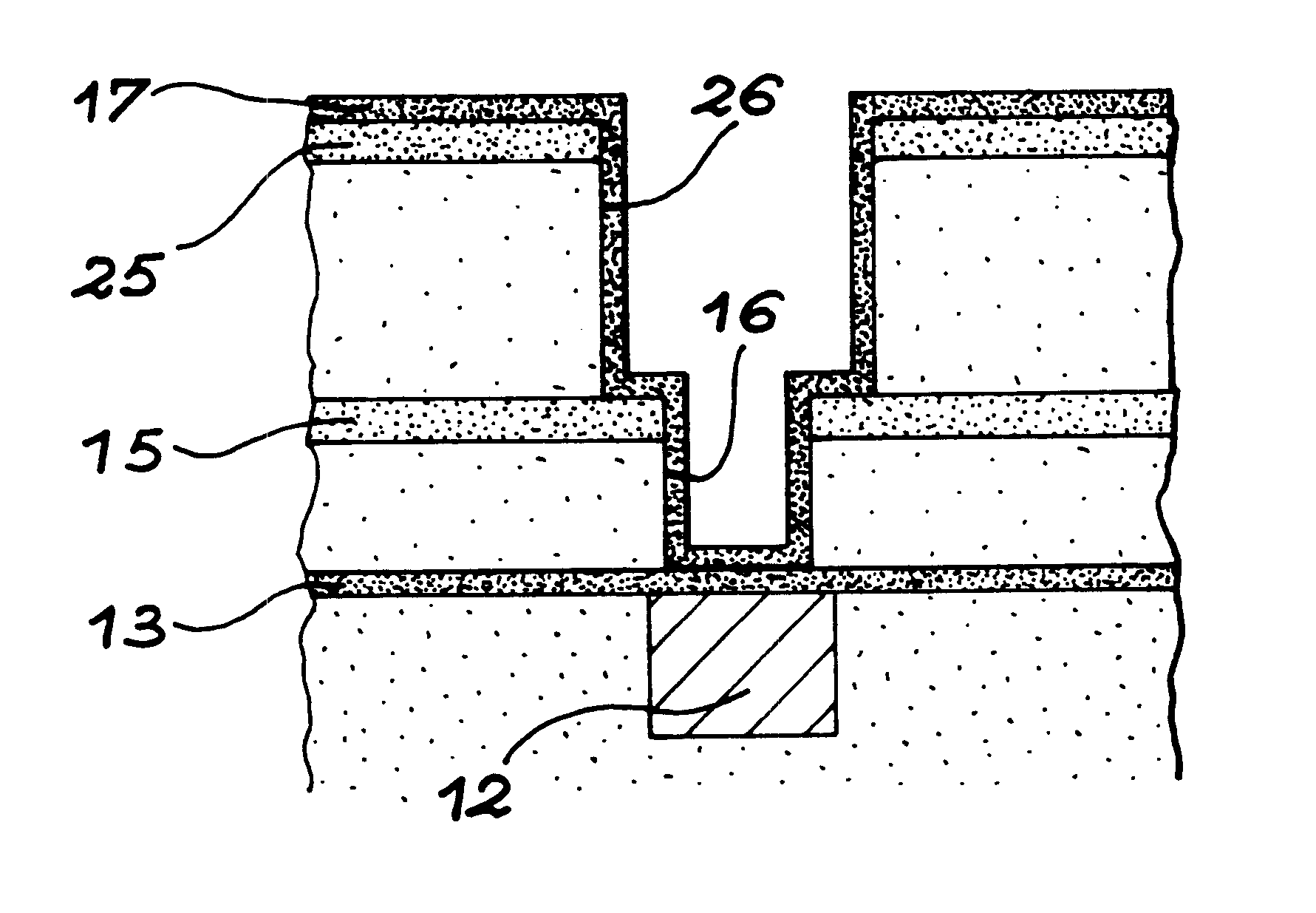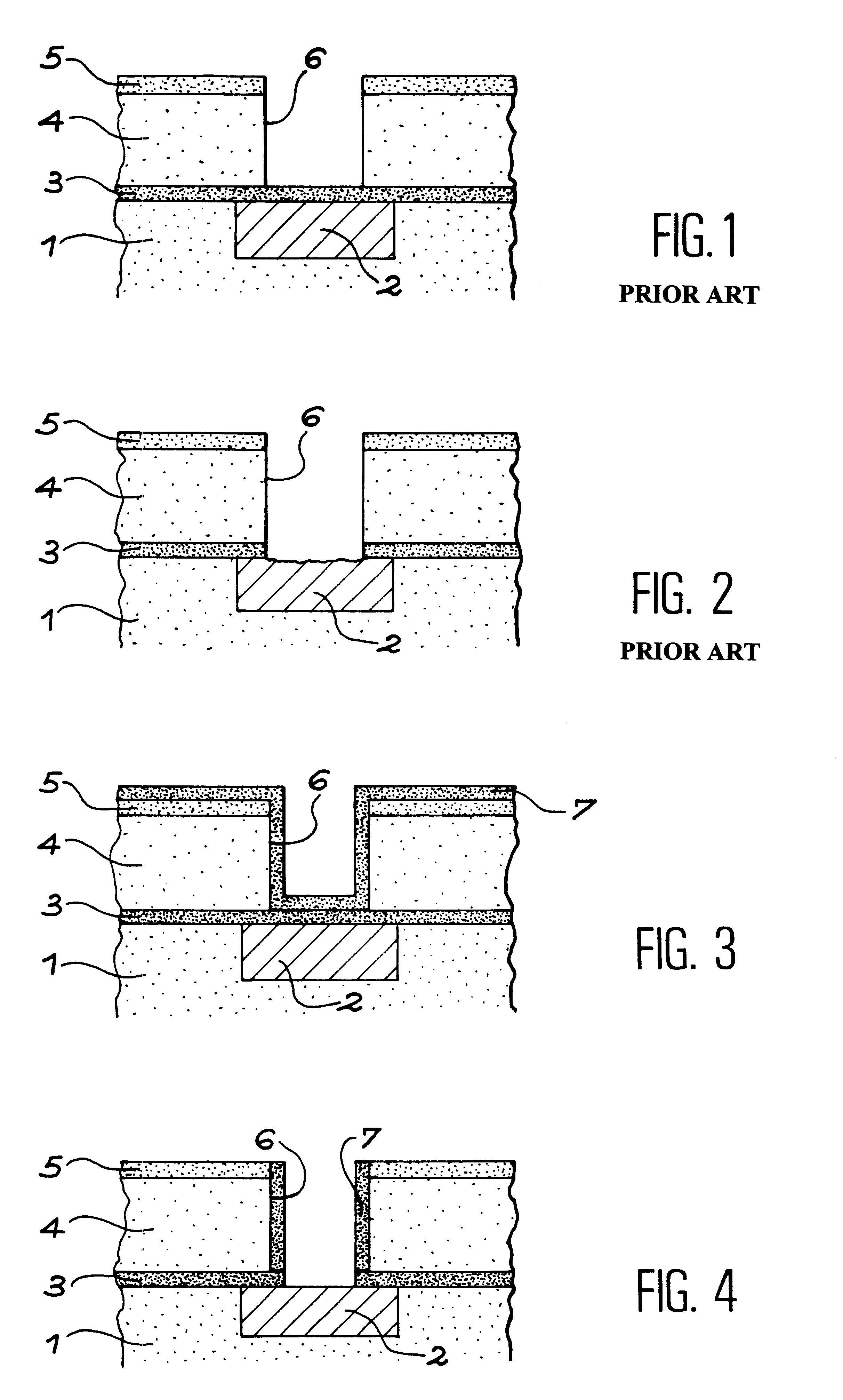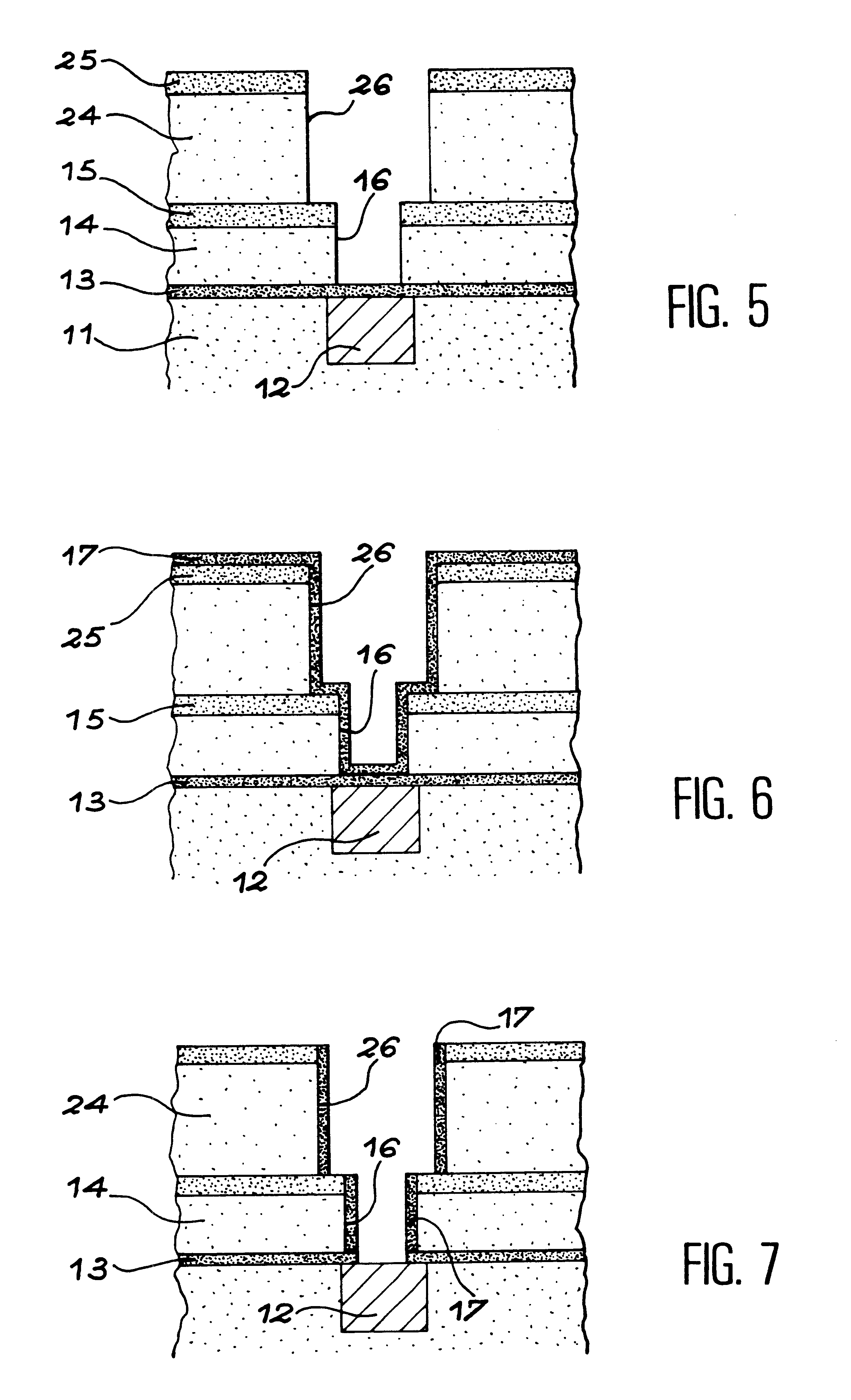Method for producing a copper connection
a copper connection and copper technology, applied in the direction of solid-state device manufacturing, electric devices, semiconductor/solid-state device manufacturing, etc., can solve the problems of inability to use cleaning processes, inability to clean, and inability to penetrate the layer of "low-k" material, so as to prevent contamination of dielectric material and reinforce mechanical rigidity of the structure
- Summary
- Abstract
- Description
- Claims
- Application Information
AI Technical Summary
Benefits of technology
Problems solved by technology
Method used
Image
Examples
Embodiment Construction
The invention provides a solution to the problems described above.
The object of the invention is a process for making a copper connection with a copper connection element in an integrated circuit comprising a damascene structure, with the connection element being covered successively with an encapsulation layer and at least one layer of dielectric material with a very low dielectric constant (called a "low-k" material), the process comprising the following steps:
etching said layer of dielectric material until the encapsulation layer is reached in order to obtain a connection hole, opposite the connection element,
forming a protective layer on the walls of the connection hole, with the protective layer enabling contamination of the layer of dielectric material by diffusion of copper to be avoided,
etching the encapsulation layer, at the bottom of the connection hole, in such a way as to reveal the connection element,
filling the connection hole with copper.
The protective layer that rema...
PUM
| Property | Measurement | Unit |
|---|---|---|
| relative permittivity | aaaaa | aaaaa |
| dielectric constant | aaaaa | aaaaa |
| metallic | aaaaa | aaaaa |
Abstract
Description
Claims
Application Information
 Login to View More
Login to View More - R&D
- Intellectual Property
- Life Sciences
- Materials
- Tech Scout
- Unparalleled Data Quality
- Higher Quality Content
- 60% Fewer Hallucinations
Browse by: Latest US Patents, China's latest patents, Technical Efficacy Thesaurus, Application Domain, Technology Topic, Popular Technical Reports.
© 2025 PatSnap. All rights reserved.Legal|Privacy policy|Modern Slavery Act Transparency Statement|Sitemap|About US| Contact US: help@patsnap.com



